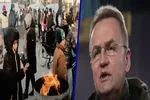Follow Us @
Mayor of Lviv, western Ukraine, has gathered some 200,000 refugees from all over the country since the war broke out. Last Friday, the city was bombarded by Russian missiles. “Our city will persevere, but the question is for how long. Our maximum capacity has been reached,” Mayor Andriy Sadovyi told Us.
The air raid sirens go off in Lviv early Friday morning. Residents rush to the bomb shelters. Minutes later, rockets hit a factory building near the airport.
The building used to be used to maintain aircraft, but according to the city government, it is no longer in use since the outbreak of the war. One person is injured.
It is the third attack in the western region since the start of the war. “Russia wants to destroy everything we have built,” said Mayor Sadovyi. He’s worried about his city. “We don’t know where the next attack will be.”
On the day of the rocket attack, city officials place 109 empty prams on the historic Rynok Square in the center of the city, symbolizing the Ukrainian children who have died since the Russian invasion.
That number has now risen to 115, the Ukrainian newspaper The Kyiv Independent reported . “Our little angels”, Sadovyi calls the children. “While politicians consult at the international level, our children are dying.”
Mayor of Lviv: 200,000 refugees in the city, maximum capacity reached
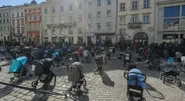
The city is bursting at the seams due to the flow of refugees
The war also left a heavy mark on Lviv. Lviv’s location (nearly 800,000 inhabitants) near the Polish border has turned the city into a refugee hotspot within a month. Just after the outbreak of the war, some 60,000 displaced persons arrived daily at the station in Lviv.
According to Sadovyi, those numbers have now fallen slightly: about ten thousand refugees arrive every day, mostly women and children fleeing the violence of war. “My job is to make sure they are safe.”
Some cross the Polish border, others stay in Lviv because “they want to stay in their own country.” There are currently about 200,000 refugees in the city, accounting for almost a quarter of the original population.
They are accommodated in hotels, theatres, (sports) schools and libraries, but many also in people’s homes.
Sadovyi: “Everyone is trying to help each other and contribute, but the city is overcrowded. We have reached our maximum capacity.”
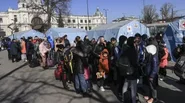
Lviv was not prepared for such numbers
Sadovyi says he initially anticipated a capacity of 100,000 refugees, half the number of people currently living in Lviv.
He also believes that international emergency aid has started too slowly. “We already raised the alarm about the situation here at the beginning of the invasion.
But aid organizations were not prepared for it.”
Most aid is currently organized locally. There, residents of Lviv, together with the municipality and nearby towns, are trying to bring food aid and provide medical care. For example, Sadovyi’s wife is in charge of a large reception center in the city.
Mayor of Lviv: 200,000 refugees in the city, maximum capacity reached
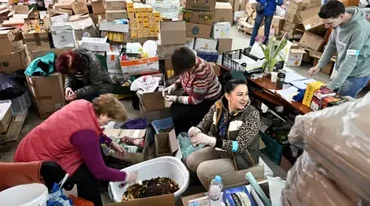
Emergency aid requires a million dollars a day
In turn, Sadovyi tries at all costs to keep Lviv’s economy going so that taxpayers’ money continues to come in. At the moment, money is needed for non-perishable food, medication, temporary housing and also bulletproof vests.
“Maintaining 200,000 people costs about 1 million dollars a day,” said the mayor, who hopes for more financial support from abroad. “Our city can hold out now, but the question is for how long.
The war will continue for a while.”
Many humanitarian supplies and weapons enter Lviv, but are directly transported to cities under attack, such as Kyiv, Mariupol and Kharkiv.
Logical, says Sadovyi. “Anyone with common sense would do the same in such a situation. We have to support each other.”
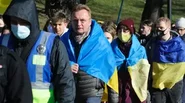
‘I try to have faith’
Despite everything, Sadovyi tries to have faith in the future. “I have seen a lot of misery in recent years.
I lived through the Orange Revolution and the Maidan Revolution.” In these large-scale popular uprisings in 2004 and 2014, Ukrainians protested against corruption and for the path to European integration. “I try to be confident and do what I can.”
He calls himself an optimist. “We recently entered Lviv in a competition to become the European Youth Capital of 2025,” he says proudly. “We will succeed.”
FEEL FREE TO >>>>>>>>>>>>>
JOIN US ON FACEBOOK: @ AFRILATEST.COM
JOIN US ON WHATSAPP: @ AFRILATEST.COM GROUP
JOIN US ON TELEGRAM : @ AFRILATEST.COM
JOIN US ON TWITTER : @ AFRILATEST
